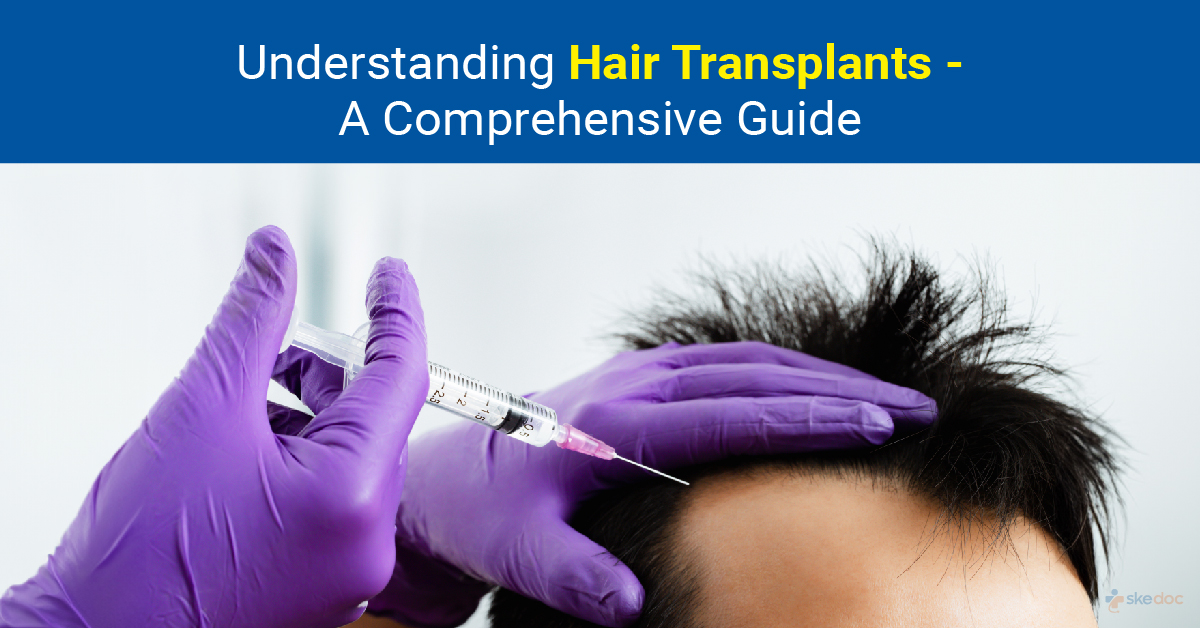Allergy
Blood Diseases
Bone & Joints
Brain
Cancer
Child Care
Cosmetic Surgery
Diabetes
Endocrinology
ENT
Eye
Gen Medicine
General Surgery
Heart
Kidney
Lifestyle
Liver & Digestive
Lung
Men’s Health
Mental health
Physiotherapy
Rheumatology
Skin and hair
Sleep Disorders
Spine
Transplant
Women Health
Thyroid
Vascular Surgery
Hair Transplantation

What is Hair Transplantation?
Hair Transplantation is a procedure done for the treatment and management of baldness or permanent loss of hair. It is done for the management of various degrees of baldness in both men and women, and involves the removal of hair follicles from a donor site on the individual’s body and transplanting them on the bald or balding area.
Is the Hair Transplantation procedure an elective or an emergency procedure?
Hair Transplantation is an elective procedure.
Types of this procedure
Hair Transplantation may be of the following types:
- Hair Transplantation with slit grafts or mini grafts – 4-10 hairs per graft are transplanted
- Hair transplant with micrografts – 1-2 hairs per graft is transplanted
Based on the type of harvesting done Hair Transplantation may be done via:
- Follicular Unit Strip Surgery/Strip Harvesting – a full-thickness scalp is removed from the donor area
- Follicular Unit Extraction – follicular units containing 2-4 follicles are extracted either manually or with the help of a punch device
Hair Transplantation may be done as:
- Follicular Unit Transplantation (FUT) – The strip of scalp that is harvested is dissected into individual grafts and then transplanted on the bald or balding area. It has the advantage of covering larger areas of baldness in fewer sessions.
- Follicular Unit Extraction (FUE) – The individual follicular units are then further placed in a predetermined density and angles for a more realistic hair pattern. It is more time-consuming and laborious but has the advantage of giving a very natural and realistic look, and it has the advantage of creating a nonlinear scar and a shorter recovery time.
Indications
Hair Transplantation may be done for the following:
- Androgenic Alopecia
- Eyebrow transplant
- Hairline reconstruction
FUT may be suitable for:
- Individuals with large areas of baldness
- Individuals who would like to complete the procedure in 1 or 2 sessions
FUE may be suitable for:
- Individuals with smaller areas of baldness
- Individuals who prefer shorter hairstyles
- Individuals with active lifestyles
- Individuals seeking a faster recovery time
- Individuals looking for less invasive procedures
Contraindications & Risk factors
Some contraindications for Hair Transplantation include:
- Poor general health
- Untreated or severe bleeding disorders
- Severe comorbidities
- Presence of active infections of the scalp
- Hair loss due to chemotherapy
- Young individuals with limited hair density in donor areas
- Individuals with conditions such as discoid lupus erythematosus, lichen planopilaris, cicatricial alopecia
- Scalp conditions such as vitiligo, psoriasis
- Individuals with alopecia pattern VI & VII according to the Hamilton classification
Investigations before the procedure
Some investigations that are advised before a Hair Transplantation procedure include:
- Laboratory tests:
- CBP & ESR
- Coagulation profile
- Iron profile (mandatory for women)
- Thyroid Profile
- Total and Free Testosterone
- DHEA sulfate (for women with irregular menstruation)
- Antibodies for HIV, Hepatitis B, and C
- ECG
Preoperative advice
Before the Hair Transplantation, the following are done:
- Risks and benefits of the procedure are explained
- Anticoagulant medications if any are stopped a few days before the procedure
- Washing of hair with shampoo on the morning of surgery
- Prophylactic antibiotics may be started before surgery in a few individuals
Intraoperative details
Duration: Depending on the type of procedure that is being done Hair Transplantation may last up to 4-5 hours.
Anesthesia: Hair Transplantation is done under local anesthesia.
Description of the procedure
The donor and recipient areas are cleaned with an antiseptic wash (povidone-iodine may be avoided in individuals with grey hair). Oral analgesic and anxiolytic medications are given. A local anesthetic is injected into the donor and recipient sites. The individual is then placed in a prone (face down sleeping) position for the harvesting of the follicles.
Based on the type of surgery that is being done the procedures may be as follows with the individual in a semi-recumbent position
FUT: A full-thickness strip of the scalp is removed from the donor area and then the donor site is closed with sutures. The strip is then further processed and placed on the recipient site. An elastic tape is sometimes placed on the forehead along the frontal hairline to prevent swelling around the eyes.
FUE: Tiny holes are created in the recipient site on the scalp and the extracted follicles are placed into these holes. The scalp is then covered in sterile bandages or gauze.
Post-operative advice
After Hair Transplantation, the individual is monitored for a brief period for any adverse reactions and then is discharged. Common post-procedure complaints are:
- Pain
- Mild swelling of the scalp
- Numbness of the scalp
Medications: Include antibiotics, analgesics for pain relief, and corticosteroids (if required) for the management of facial swelling.
Review: A review is usually done on the 1st and 3rd postoperative days.
Resumption of normal activities: Normal activities can be resumed 1 day after the surgery. Self-care of the hair can be undertaken from the 3rd postoperative day. Removal of sutures is done on the 7th- 10th postoperative day.
Role of diet/ Exercise/ Lifestyle changes
Some measures that need to be taken after a Hair Transplantation procedure include:
- Avoiding strenuous activity for up to 48 -96 hours postoperatively
- Swimming with head submerged to be avoided for at least 7 days postoperatively
- Careful wound and suture care in FUT
Complications
Some complications that are associated with Hair Transplantation include:
- Infections
- Bleeding
- Severe itching
- Severe swelling of the scalp and face
- Thinning of hair, also known as “shock loss”
- Folliculitis
- Unnatural looking hair
Prognosis
The prognosis for Hair Transplantation is generally very good with complications being few. It also varies between individuals and depends on factors such as the quality of the scalp skin, density of the hair follicles available in the donor areas, and the quality of the hair in the donor areas.
When to contact the doctor or hospital? / Indications for hospitalization if required
It is advisable to seek medical attention if there is fever, severe pain despite medication, or severe swelling, bleeding after a Hair Transplantation surgery.
Suggested clinical specialist/ Department to consult for this procedure
- Dermatology
Was this article helpful?
YesNo




